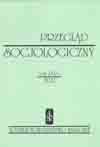Mixed Mode Survey Design: problem efektu techniki
Mixed Mode Survey Design: Mode Effect Problem
Author(s): Franciszek Sztabiński, Teresa Żmijewska-JędrzejczykSubject(s): Social Sciences
Published by: Łódzkie Towarzystwo Naukowe
Keywords: Total Survey Error; Non-Response Error; Mode Effect; Mixed Mode Survey Design; European Social Survey
Summary/Abstract: The fieldwork conditions for surveys becomes progressively worse so methods are being sought to reduce the total survey error arising from non-response error. One solution is the mixed mode survey design procedure whereby the same information is obtained from different respondents, using different data collecting modes (e.g. PAPI, CATI, Web survey). However, this procedure may produce the so-called mode effect. In this paper, we analyse the mode effect from the following perspectives: (i) wording of questions, (ii) contacting mode, and (iii) mode of communication with the respondent. We assess response rates and compare respondents’ answers to the same questions obtained through different techniques. Our analysis is based on materials collected in research projects employing two modes PAPI (the European Social Survey, Round 3) and CATI (ESS Infrastructure: i3, a study funded under a methodological grant). The findings from our analysis confirm the existence of significant differences related to the mode effect (in the case of PAPI and CAPI). Those findings challenge the idea of combining those modes to reduce non-response error.
Journal: Przegląd Socjologiczny
- Issue Year: 61/2012
- Issue No: 1
- Page Range: 31-63
- Page Count: 33
- Language: Polish

